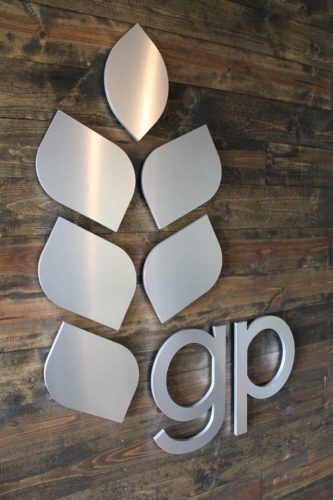Mesa, AZ – Sign Making 101: All About Substrates: Dibond | Sign Company News
Posted in: Industry News
 When it comes to choosing materials for sign making, Dibond is one of the most popular options. But what is Dibond, and why is it a good choice for custom signs?
When it comes to choosing materials for sign making, Dibond is one of the most popular options. But what is Dibond, and why is it a good choice for custom signs?
This article examines what Dibond is and how it is produced. We also explore some of the benefits this substrate offers over others. Finally, we take a look at some common applications for Dibond signs.
What is Dibond?
Dibond is a composite material made up of two thin sheets of aluminum sandwiching a polyethylene core. The aluminum sheets are first placed in a large furnace where they are heated to over 1000 degrees Fahrenheit. Once at this temperature, the aluminum sheets are then passed through rollers which press them together. After this, the material is cooled and cut to size.
How is Dibond Cut?
- Waterjet cutting uses a high-pressure stream of water to cut through the material.
- Laser cutting melts or vaporizes the material.
- Routers cut into the material with a rotating metal bit.
Can You Print Directly on Dibond?
Yes, printing directly on Dibond is possible and is typically done with a flatbed printer. This type of printer uses large rollers to feed the material through the printer as it prints. However, because Dibond is not a very absorbent material, special inks and coatings must be used for the print to adhere properly.
Is Dibond Better than Aluminum?
Dibond is different from solid aluminum. Aluminum is resistant to corrosion. Aluminum signs also tend to be more durable than Dibond due to the solid nature of the substrate. When it comes to printing, aluminum can be printed upon with digital methods or screen-printed with UV-resistant inks. However, aluminum doesn’t offer the same level of versatility as Dibond.
So, which is better? Ultimately, the decision comes down to personal preference and what you need your sign to do. If you need a lightweight but strong sign with printing versatility, Dibond is a great choice. If you prefer the look of aluminum or need a sign to withstand heavy use, then aluminum might be the better option for you.
What Benefits Does Dibond Have Over Other Substrates?
- Lightweight yet sturdy
- Weather resistant
- Printable smooth surface
- Recyclable
- Long lifespan
- Resistant to damage
- Fire-resistant
- Various finish options including mirror, matte, or gloss finish
Common Uses for Dibond
Dibond signs are commonly used for a variety of indoor and outdoor purposes. They are popular choices for office buildings, trade shows, small businesses, and storefront buildings. Below are some of the more popular types of signs made from Dibond.
- Building signs
- Directional arrows
- Wayfinding sign systems
- Retail window signs
- Menu boards
- Parking / parking lot signs
- Business hours signs
At FASTSIGNS® of Mesa, AZ, our sign experts will help you throughout the sign-making process, from choosing substrates to design and installation options. Contact us today to learn more or visit our sign shop on E Southern Ave in Mesa to see some examples.
Return to: Mesa, AZ – Sign Making 101: All About Substrates: Dibond | Sign Company News
Social Web